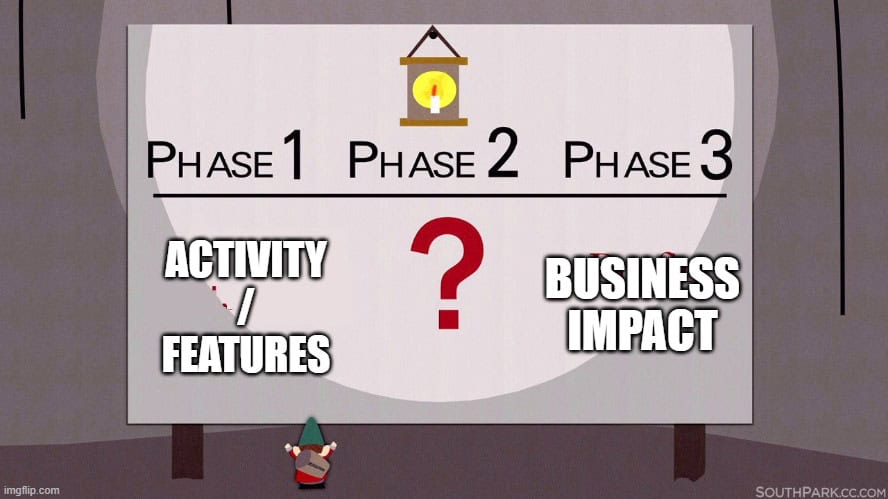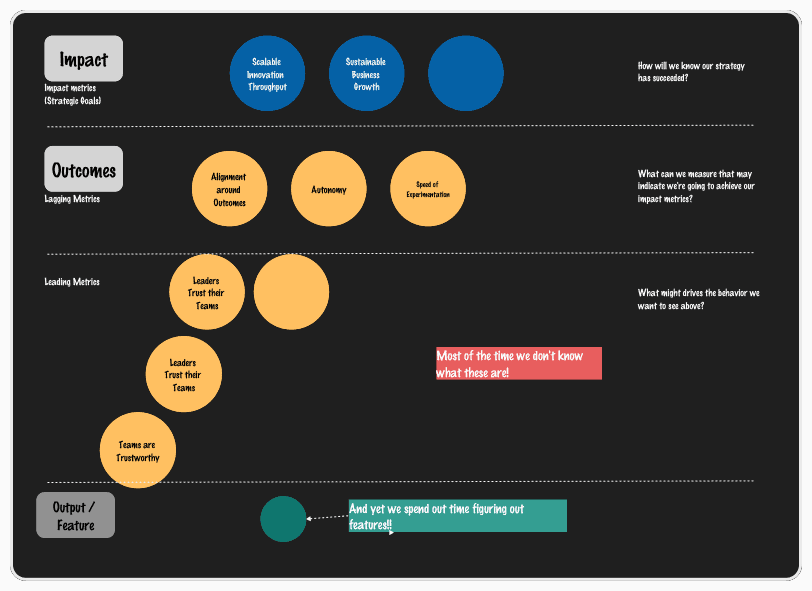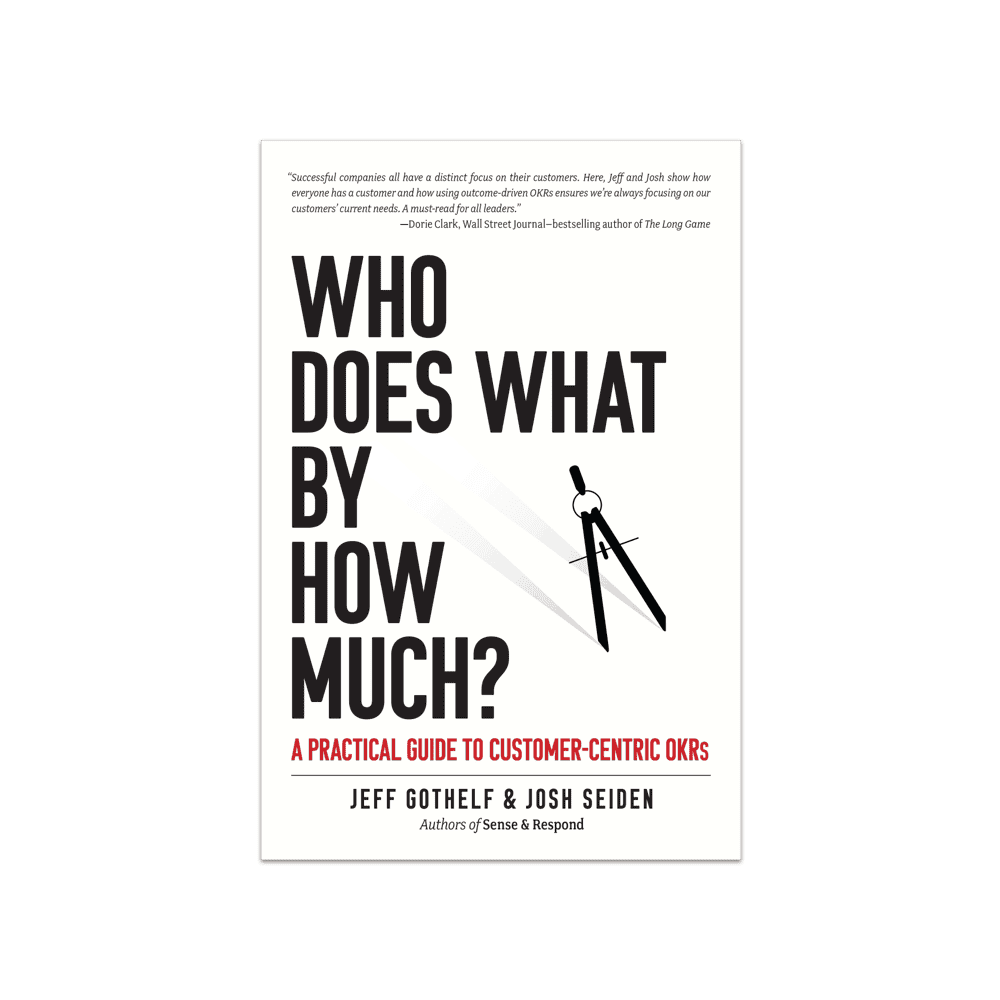Picture this: You’ve invested in a framework, maybe rolled out Agile, SAFe or OKRs , and your teams are “following the process”. But despite all the activity, the promised business impact just isn’t showing up. Sound familiar? If so, you might be caught in Process Theater - a situation where everyone’s performing the rituals, but the outcomes you care about never materialize.
(Prefer audio? This article is also available as an episode on the Scaling w/ Agility Podcast)
Let’s explore why this happens, how to spot it, and—most importantly—how to use outcome mapping to move from process compliance to real, sustainable traction.
What Does Process Theater Look Like?
First, let’s get clear on the symptoms. Process Theater isn’t about bad intentions. Most teams and leaders genuinely want to improve. But what you’ll see is a focus on mechanics over meaning. Teams spend 80% of their energy on following the process to say “we’re doing it,” not because they see the value.
Take OKRs as an example. If your organization is measuring success by whether OKRs exist, not whether they’re helpful, you’re in OKR Theater. You’re tracking the presence of objectives and key results, but nobody’s using them to drive decisions or create alignment. It’s activity masquerading as progress.
The Underpant Gnomes Problem: Missing the Middle Layer

Why does Process Theater take root? It usually starts with a reasonable goal - maybe leaders want more alignment or sharper focus. But instead of connecting the dots between the process and the intended impact, everyone jumps straight to implementation. It’s the classic “underpant gnomes” problem: Step 1, collect underpants (run standups, write OKRs); Step 3, profit (achieve alignment). Nobody can explain Step 2 - how the process leads to your desired outcome.
This missing middle layer is the connective tissue: the actual behaviors and outcomes that bridge process and impact. Without it, you end up with a lot of motion, but not much movement.
Alignment with Autonomy: The Real Goal
Let’s take OKRs again. The intent behind OKRs isn’t just to document objectives and key results in a tool. It’s to create alignment with autonomy. You want people moving in the same strategic direction but with the freedom to figure out how to get there. That’s the heart of agility: aligned AND empowered teams.
But to get there, you need to define the behaviors you want to see. Instead of teams writing OKRs because they were told to, you want teams that understand the strategic context and can make decisions themselves. For leaders, it means providing clear intent and stepping out of the way, trusting teams to own the “how”.
Building Trust and Empowerment
So, how do you build that trust? Leaders need to know what teams are working on - at the right level of detail - and see evidence of traction. When teams focus on a few key things and deliver tangible progress, it builds trust. That trust, in turn, leads to more empowerment and more decentralized decision-making. Over time, you get a positive flywheel: more trust leads to more autonomy, which leads to better outcomes, which builds even more trust.
But it doesn’t happen automatically. In most organizations, leaders are used to being involved in every decision. Sometimes, this is inertia, and sometimes, it’s a lack of trust.

From Outcome Map to OKRs
Once you map out the outcome - the behavior you want to change, you can define it as a key result in a change-focused objective. Here's one way this could look:
Objective: The majority of our innovative knowledge work takes place in aligned and empowered teams that have the autonomy and ability to innovate, experiment, sense, and respond by the end of the year.Key Result: Leaders let their teams figure out what to build 80% of the time.You could stop here. You identified the behavior you want to see. By setting this as your OKR, you’re providing direction and flexibility. You’re not dictating the activities or deliverables that would lead to leaders letting their teams figure out what to build more of the time. The team that would work on achieving this objective will have to hypothesize, ship, sense, and respond to techniques/interventions to try and move the needle towards this goal.
Having said that, sometimes a bit more direction can be useful. While you should avoid telling teams exactly what to do, you could provide the direction that trust leads to empowerment/autonomy.
Leading Indicator Key Result: Leaders consider 80% of their teams to be accountable, predictable, and trustworthy.Closing the Curtain on Theater: Practical Steps
If you’re a leader and you sense process theater in your organization, here’s what I suggest:
- Map out the specific behaviors that feel like theater. What are people doing just to check a box?
- Walk back from those behaviors: What’s driving them? What’s the impact? Can you identify a downward spiral?
- Reconnect with the original intent. What outcomes and impact are you after?
- Use outcome mapping to clarify the chain from process to impact.
- Look for interventions that stop the downward spiral and then start turning the flywheel towards the outcomes and impact you seek.
- Set objectives and key results around these behaviors and outcomes, not vanity metrics, even if these are harder to measure. Prefer measuring qualitative outcomes and quantitative vanity.

This article was inspired by Who Does What by How Much (Which works very nicely to dive deeper into using OKRs to implement Evidence-based Management)
